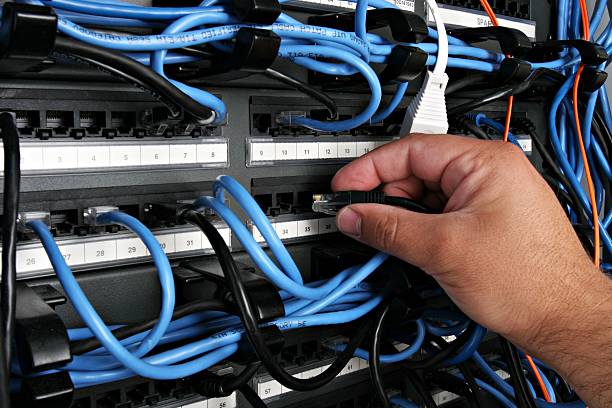
Structured cabling is a type of design that aids in the smooth operation of a company’s cable system or network. It’s the glue that holds the company’s computers, phones, and other devices together, providing a durable and adaptable solution to a variety of communication requirements. The importance of well-organized cabling systems varies with every firm, but in general, it may ensure a long-lasting, highly reliable, and cost-effective network design. With an increasing number of electronic devices designed to connect to a wireless network, it’s critical to assess the benefits of structured cabling systems before establishing one in your office. For enterprises, organizations, and government institutions, structured cabling provides a comprehensive telecommunication infrastructure that allows them to communicate data, audio, alarm, video, and signals through the network. Because structured cable networks are more secure and reliable than wireless networks, this is the case.
The remarkable benefits of structured cabling are listed below.
Putting Money Into The Future
One of the most significant advantages of a structured cabling system is its high bandwidth, which makes it a stable framework for maintaining business expansion. In today’s competitive corporate world, having adaptable IT that is scalable and can respond quickly to industry advancements is crucial. To keep existing customers and continue to gain new ones, businesses require a data center that enables rapid development and deployment of new services. With structured cabling, you can rest assured that your network infrastructure will not become obsolete and that it will be able to support all new applications as your business expands.
It’s Less Likely That Downtime Will Occur.
Disorganized cabling systems with tangled cables commonly cause connectivity issues, resulting in network outages and lost productivity. There is a considerable risk of human error and blunders with diverse, unstructured cabling systems, which can cause workflow delays and network disruptions. As previously stated, a well-planned cabling infrastructure facilitates troubleshooting by allowing for faster detection and correction of faults.
Improved Adaptability
The network will be scalable and highly adaptable, allowing it to maintain a continual flow of data while also handling the massive demands imposed on it. As a result, productivity and business success will both improve. A single cabling system saves time and money by avoiding the time and money spent detecting and correcting any faults, in addition to saving power and maintenance costs. Because it can readily and quickly absorb new adjustments, additions, and moves, a structured cabling system is exceedingly versatile. As a result, your company’s performance will improve, leading to increased business growth. It also reduces installation time and enhances adaptability to changes in network infrastructure, making transitioning to a new office a snap.
Bandwidth
Structured cabling solutions provide far greater bandwidth and do so more efficiently than previous point-to-point connections. Most modern systems rely on high-speed, high-capacity fiber-optic lines with plenty of bandwidth. Fiber optic patch cables can connect components within telecommunication rooms and even user terminals, allowing everything to run at top speed.
Flexibility At A Low Cost
Structured cabling is flexible by nature. End users can transfer and reconfigure equipment without having to rewire anything or move anything other than the Ethernet or fiber optic patch cables that connect each device to the network via existing ports and outlets. Structured cabling is, therefore, less expensive than purchasing new cables or, even worse, opening up walls and ceilings to run extra wires or redirect lines within the building. Businesses will add, modify, or upgrade components and shift things around, thus structured cabling anticipates this.